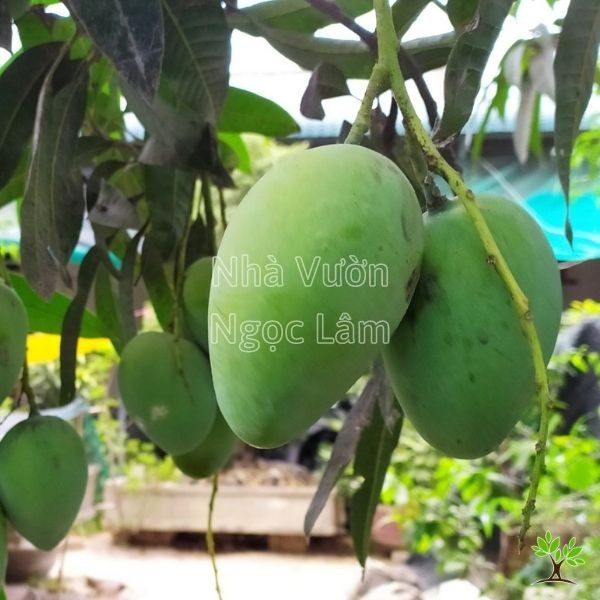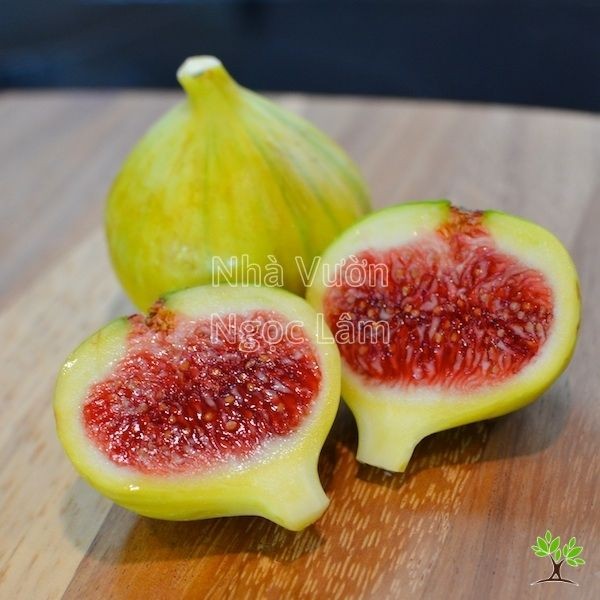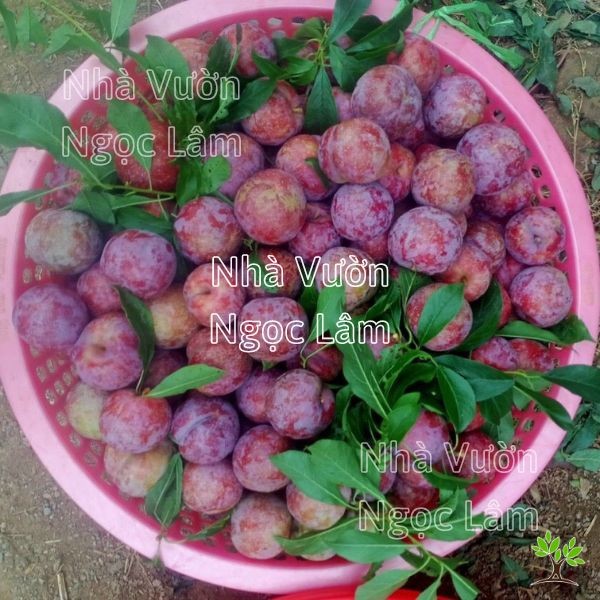No products in the cart.
NEWS
Easy-to-Grow Fruit Trees for a Bountiful Home Garden
Cultivating a home garden filled with fresh, delicious fruit is a rewarding endeavor for many plant enthusiasts. Easy-to-grow fruit trees are a popular choice, offering a convenient way to enjoy a continuous supply of nutritious produce right from your backyard. These varieties are known for their adaptability and generous yields, making them ideal for both novice and experienced gardeners. Let’s explore some of the most favored fruit tree varieties that thrive with minimal fuss and provide abundant harvests.
Characteristics of Easy-to-Grow Fruit Tree Varieties
What makes certain fruit tree varieties easier to cultivate than others? Generally, these trees share several key characteristics that contribute to their low-maintenance nature and reliable productivity:
- Adaptability: They often tolerate a wide range of climates and environmental conditions, thriving in various regions without requiring specialized care.
- Soil Tolerance: These varieties are typically not highly demanding regarding soil type, growing well in different soil compositions as long as basic requirements are met.
- Vigorous Growth & High Yields: They exhibit strong growth patterns, frequently producing high yields season after season with excellent fruit set rates.
- Simple Care: Their cultivation does not demand complex techniques or rigorous maintenance schedules, making them suitable for beginners.
- Popularity: Due to their ease of growth and desirable fruit, they are widely planted and enjoyed by many families.
10 Easy-to-Grow and Productive Fruit Trees
For those looking to start or expand their home orchard, selecting the right varieties is key. Here are 10 fruit trees known for their ease of growth and impressive productivity, perfect for adding diversity and flavor to your garden:
Mango Tree
Mango trees are iconic tropical fruit bearers, widely cultivated for their economic value and delectable fruit. Easily identifiable, these trees are a staple in many warm climates.
Mango trees are woody and can start producing fruit within 2-3 years of planting. Their leaves are long and elliptical with prominent stems. Mango flowers are small, white, and fragrant, blooming in large clusters. The fruit is typically oval or elongated with smooth skin. Unripe mangoes are green, firm, and often tart. As they ripen, they turn yellow, the flesh softens, and they develop a sweet, aromatic flavor.
Mangoes are not only delicious but also highly nutritious, packed with vitamins and minerals like Vitamins A, B, C, E, Magnesium, Biotin, Calcium, and Iron. Numerous varieties exist, including fragrant types, Thai mangoes, or different local cultivars, each with unique characteristics. Mango trees adapt well to tropical climates and are remarkably tolerant of drought and can even adapt to cooler conditions, making them a versatile choice for various regions. They grow vigorously and produce plentiful harvests with minimal intervention.

Guava Tree
Guava trees are known for their prolific fruit production each season. This variety is often grown for its high economic yield and is also popular as an ornamental potted plant in home gardens due to its attractive form. Guava trees are both easy to grow and yield fragrant, healthy fruit, making them a favorite among gardeners.

Guava is highly adaptable to various conditions, is very easy to plant, and absolutely loves sunlight. Trees can produce fruit year-round, and often start bearing within 1.5 years if grown from cuttings or grafts. Guava is rich in nutrients beneficial for health. It typically has a crisp texture and a sweet-tart flavor. This fruit is particularly good for individuals with high blood pressure or diabetes. It also aids weight loss, boosts the immune system, supports digestive health, and has anti-aging properties.
Jackfruit Tree
The Jackfruit tree is a familiar sight in many home gardens, known for being easy to plant and simple to care for. It’s a light-loving variety that adapts well to various conditions and can withstand harsh climates.
 Hinh-anh-qua-mit-thai
Hinh-anh-qua-mit-thai
Jackfruit can bear fruit year-round with consistently high quality. The fruit is large, composed of numerous fleshy bulbs (arils) that are typically yellow and incredibly fragrant and delicious. Externally, it has a rough, spiky skin. When ripe, it emits a powerful aroma that stimulates both the sense of smell and taste. Jackfruit is also loaded with nutrients like Calories, Carbs, Fiber, Protein, Vitamins, etc., helping to prevent certain diseases, fight aging, improve skin health, and support cardiovascular health.
Golden Star Apple Tree
The Golden Star Apple, recently popular in the agricultural market, is known for its eye-catching appearance and distinctive flavor. Originating from Taiwan and also called Abiu, this variety of star apple has gained popularity. Let’s look at some notable features of this Golden Star Apple variety.
This is a woody tree variety, typically reaching heights of 2 to 4 meters. The Golden Star Apple has thin, smooth, shiny yellow skin and a wonderfully fragrant, unique flavor. Its leaves are quite long and grow separately from the fruit. The flesh is thick, very soft, and has a distinctive sweet taste, containing high amounts of fiber and calcium.

Golden Star Apple trees are relatively easy to plant and highly adaptable to various climates, producing high yields. However, they tend to grow and yield better in older cultivated soils, paddy soils, or alluvial soils. With suitable conditions and good care, the trees can start bearing fruit within 1 to 3 years after planting.
Green Pomelo Tree
Green Pomelo (or certain types of Grapefruit) is a fruit often found in home gardens and frequently given as a sophisticated gift in traditional settings. It is considered one of the easiest fruit trees to plant and care for.
Each fruit can weigh from 2kg to 2.5kg. The skin is typically dark green, with some varieties having yellowish skin when ripe. The flesh is thick, with large, juicy vesicles that are sweet and slightly tangy. The price of pomelo varies depending on location and fruit size. This popular citrus tree thrives with simple care.
Mỹ Fig Tree
The Mỹ Fig (often referring to certain cultivated fig varieties) is one of the easiest and quickest-to-fruit trees to plant, making it highly desirable. This fig variety is widely grown and favored due to its nutritional value and health benefits.

Fig trees are drought-tolerant and can be grown in many places. However, they prefer loamy soil or volcanic soil for optimal growth. Mỹ Fig trees have good disease resistance and are less prone to pests.
Mỹ Fig is a bushy tree that can grow from 1.5m to 2m, and up to 6m in height. It yields fruit year-round with stable production. The fruit is very sweet and juicy, with a certain chewiness and a wonderfully unique flavor. Figs are high in nutrients like calcium, potassium, vitamins E, B, and plenty of fiber. Mỹ Figs help strengthen the body, prevent coronary artery disease, aid in weight management, prevent high blood pressure, asthma, and constipation.
Kiwi Tree
Kiwi might still be a relatively new fruit tree variety for many gardeners, but it is surprisingly easy to grow and well-suited to subtropical climates. Kiwi is increasingly popular among growers due to its high quality and economic benefits.
 cay-kiwi-giong
cay-kiwi-giong
Kiwi has a unique flavor, often described as a blend of mango and peach. The fruit is oval with fuzzy brown or green skin and juicy flesh filled with small black seeds. Kiwi is packed with beneficial nutrients like Vitamin C and antioxidants. Kiwi trees are best suited for regions with distinct seasons. They have a relatively quick time from planting to fruiting and don’t require excessive care. The high market price of kiwi can make it economically rewarding for growers.
Hậu Plum Tree
Another easy-to-grow fruit tree worth mentioning is the Hậu Plum. This variety is quite famous and favored, particularly in mountainous regions and across the country. The simple reason is that this plum variety is easy to plant, simple to care for, provides high economic value, and yields incredibly delicious fruit.
 hinh-anh-qua-cay-man-hau
hinh-anh-qua-cay-man-hau
Hậu Plum is a woody tree, with an average height ranging from 4 to 15 meters. The leaves are relatively thin and serrated, with elongated blades. Hậu Plum flowers typically grow in clusters of 5 to 30 blossoms. The fruit is round with red skin, and the flesh is purplish-red, making it visually appealing. Hậu Plums have a fast harvesting time and high yields. Typically, trees bear fruit within about 5-6 months after planting and can be harvested. Each season can yield around 90 tons per hectare, which is a significant advantage that many growers appreciate.
Long-fruited Mulberry Tree
The Long-fruited Mulberry variety is not only easy to grow but also quite unique. It is sometimes referred to as a “sacred fruit.” This mulberry variety typically lacks sourness due to its high sugar content, offering a purely sweet and refreshing flavor that is widely loved.
This Long-fruited Mulberry variety is exceptionally nutritious and boasts a visually striking color. The fruits are indeed long, often reaching 10cm and sometimes up to 18cm when fully developed.
This mulberry tree is an easy-to-grow fruit tree with very high adaptability. The tree has broad applications as both the leaves and the fruit can be used. The fruit’s sweetness and high yield meant it was historically considered a nutritious food suitable even for emperors.
Longan Tree
Longan is widely considered an easy-to-grow fruit tree that doesn’t demand much care. Longan trees can sprout relatively quickly from seed if watered frequently. Alternatively, planting high-quality grafted seedlings can accelerate development and early fruiting. Longan trees are generally resistant to diseases and are rarely affected by stem borers, making care quite straightforward.

Longan fruit is rich in Vitamin C, which is excellent for health and helps reduce stress and fatigue after a long day. Furthermore, longan trees typically produce high yields, making them very suitable for cultivation to increase economic value.
How to Plant and Care for Easy-to-Grow Fruit Trees
Easy-to-grow fruit trees, while low-maintenance, still benefit from proper planting and care techniques to ensure high yields and quality fruit. Understanding the right procedures is crucial for maximizing productivity and fruit quality. Based on extensive experience in horticulture, here are some key steps for cultivating these rewarding trees.
Selecting the Planting Location
Even easy-to-grow fruit trees are sun-loving. These varieties require at least about 6 hours of direct sunlight daily for proper photosynthesis and vigorous growth, leading to better quality fruit.
Therefore, before planting, it’s essential to select and determine a suitable location for the tree. Choose a spacious area to ensure the tree is not shaded by taller plants and doesn’t have to compete intensely for nutrients or water. Additionally, when selecting the site, consider the mature size of the tree to ensure there is enough space for its roots to spread and its canopy to expand freely. This consideration is especially important for fast-growing or short-season fruit trees.
Checking Drainage
Water is a vital element for growing any fruit tree. Trees need sufficient water, but overwatering can lead to waterlogging, damaging the root system and potentially killing the tree. Before planting, prepare drainage channels and ensure the planting area has no signs of standing water. Good drainage is paramount for root health.
Preparing the Planting Hole
Digging the planting hole is relatively simple but requires considering the size. Adjust the size of the hole based on the size of the seedling’s root ball. Remember that fruit tree roots tend to grow outward over time, so loosening the soil in a wider area around the hole will help the root system develop without obstruction throughout its growth process. A hole that is twice as wide as the root ball and just as deep is a good starting point.
Fertilizing the Tree
All fruit tree varieties require a sufficient supply of nutrients. Fertilizing at the right times provides essential nutrients for the tree’s development through various stages: flowering, fruit set, and ripening. Typically, the period before bud formation is a time of strong growth, requiring ample nutrients.
During the flowering and fruiting stages, in addition to nitrogen or potassium, it’s beneficial to apply NPK fertilizers with a balanced ratio of Nitrogen, Phosphorus, and Potassium. Nitrogen contributes to increasing the size and quality of the fruit, giving it better color and taste. Potassium aids in the efficient transport of nutrients to the fruit, ensuring optimal yield and quality. Applying compost or well-rotted manure before planting and supplementing with balanced fertilizers as the tree grows is a common practice.
Pruning Fruit Trees
Regular pruning of fruit trees is essential for shaping the tree to promote healthy growth with well-spaced branches. Pruning allows the tree to receive more sunlight, which helps ripen the fruit and encourages good air circulation, reducing the risk of pests and diseases.
Furthermore, removing damaged, weak, or unproductive branches directs the tree’s energy towards nourishing healthier ones. However, it’s important to note that pruning should be done periodically at the correct time of year for the specific tree variety and not arbitrarily.
Where to Find Quality and Reputable Fruit Tree Seedlings?
If you are researching and looking to purchase fruit tree seedlings, you should choose reputable and quality nurseries. Biogarden.asia has certified nurseries and guarantees reliability, specializing in providing a wide range of tree varieties with excellent growth and development potential.
All seedlings provided by Biogarden.asia are quality-checked and carefully nurtured. These are seedlings grafted or propagated from high-quality mother plants. At Biogarden.asia, you will receive dedicated and detailed consultation on the varieties you are interested in and clear technical guidance on care procedures. Furthermore, Biogarden.asia always offers competitive pricing and special offers for its valued customers.
Biogarden.asia confidently commits that all fruit tree seedlings supplied come with verifiable origin documentation, information about the production unit, and product quality assurance.
Biogarden.asia has provided you with information about easy-to-grow fruit tree varieties along with suitable planting and care methods. We hope this information helps you understand more about these fruit tree varieties and encourages you to choose and plant a few more fruit trees to make your home garden more diverse and colorful.



